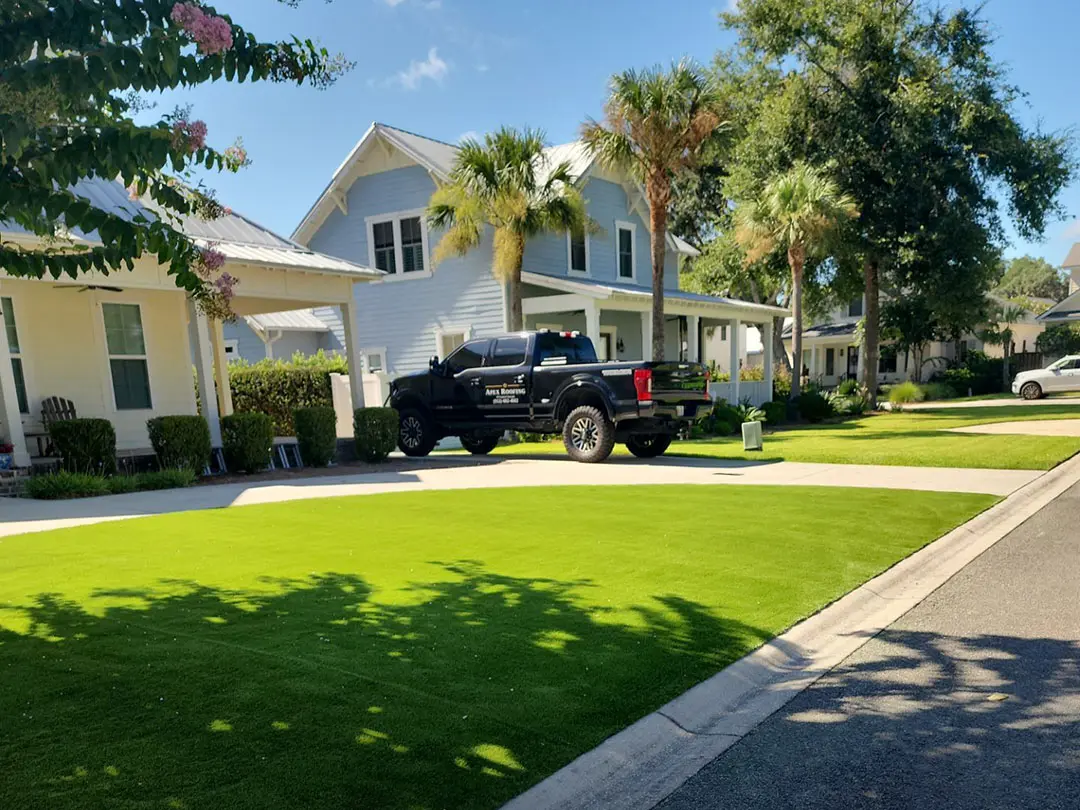
Homeowners across Florida often wonder whether artificial grass is permitted in communities governed by homeowners’ associations. If you live in Tampa Bay and are considering synthetic grass, the answer depends on your community’s governing documents and how its review committees evaluate design changes. Florida law provides a framework, but associations hold significant authority in determining landscape standards. With a clear understanding of the rules and a well-prepared application, approval is achievable.
Florida law and HOA authority
State law gives homeowners’ associations a lot of power to keep neighborhoods looking appealing and protect property values. Associations have the authority to establish declarations, bylaws, and architectural guidelines that regulate landscaping practices. Florida also wants to conserve water, and artificial turf helps with this by reducing the need for irrigation. Even so, turf usually needs to be checked by an architect because it is a man-made material, unlike real grass.
How HOAs handle turf requests
Most homeowners’ associations (HOAs) require homeowners to fill out an architectural application before putting in artificial grass. The declaration and rules may specify where turf is permitted, what it should look like, and which materials are acceptable to use. Some neighborhoods allow you to have turf in your front yard as long as it meets certain color, pile height, and edging standards. Some people only let turf grow in backyards, play areas, or pet zones. Some don’t allow turf at all, usually because of outdated rules that were established before high-quality modern products became available.
Common requirements for approval
A full application usually has a site plan that shows the areas to be covered, product specifications that list the height of the piles, the weight of the face, the type of backing, and the details of the infill. It may also have pictures or samples of the turf that was chosen. Boards also require drainage plans that demonstrate water won’t pool or run onto nearby properties. Providing information about edging, seam placement, and how to move from one type of landscaping to another shows that the installation will look appealing as a whole.
Appearance standards and installation practices
One of the main things that HOAs worry about is how artificial turf looks. Committees often want turf that has a mix of green shades, a realistic thatch layer, and UV protection to keep it from fading. They may also need to hire a professional to ensure the seams are concealed, the edges are secure, and the fibers are properly groomed. It can help boards see the result better if you include pictures of finished projects that use the same product.
Maintenance expectations
Associations also want to know that artificial grass will stay nice-looking over time. Part of the maintenance may include grooming to keep the fibers upright, adding more infill, and rinsing pets. This includes addressing areas and fixing edges that have become raised. Adding a written maintenance plan to your application can strengthen it and demonstrate your commitment to long-term care.
Addressing drainage and environmental questions
During a review, drainage typically raises the most technical questions. A permeable base, proper grading, and, if needed, French drains or catch basins can help with these problems. Committees may also want to know about the effects on the environment or the heat on the surface. Many modern products have bases that let water through, fibers that don’t catch fire, and features that kill germs. Giving these details shows that the installation will be safe, work well, and be beneficial for the environment.
Steps to take if your request is denied
The committee must give a specific rule or reason if they turn down your application. A new submission can often fix the problem. For instance, using a different product might fix problems with sheen, or making the installation area smaller might meet coverage limits. If there are questions about drainage, giving more engineering information can help. Most communities have a way to appeal, and polite, well-documented responses make it more likely that the appeal will be successful.
Evolving standards in newer and older neighborhoods
Newer communities often include turf standards in their first rules, which makes it easier to get approvals. On the other hand, older neighborhoods may still follow rules that were made before modern turf was available. In these neighborhoods, homeowners sometimes work with boards to change the rules, pointing out the benefits of saving water and using fewer chemicals. Bringing samples and pictures of well-done installations can help speed up that process.
Moving toward approval with confidence
Getting ready is the best way to get approval. Start with a clear description of your project, all the product literature, a detailed site plan, and a plan for drainage. Include pictures of similar installations and a plan for their maintenance. Sending in a complete and professional package shows that you care about the process and increases your chances of getting approval.
If you live in Tampa Bay and are considering artificial grass, it is possible to secure HOA approval by preparing a complete and professional application. With the right product, detailed planning, and respectful communication, you can enjoy the long-lasting benefits of a low-maintenance lawn. For expert guidance on turf products, HOA submissions, and installation, consult Artificial Turf Tampa.
Picture Source: Artificial Turf Tampa

